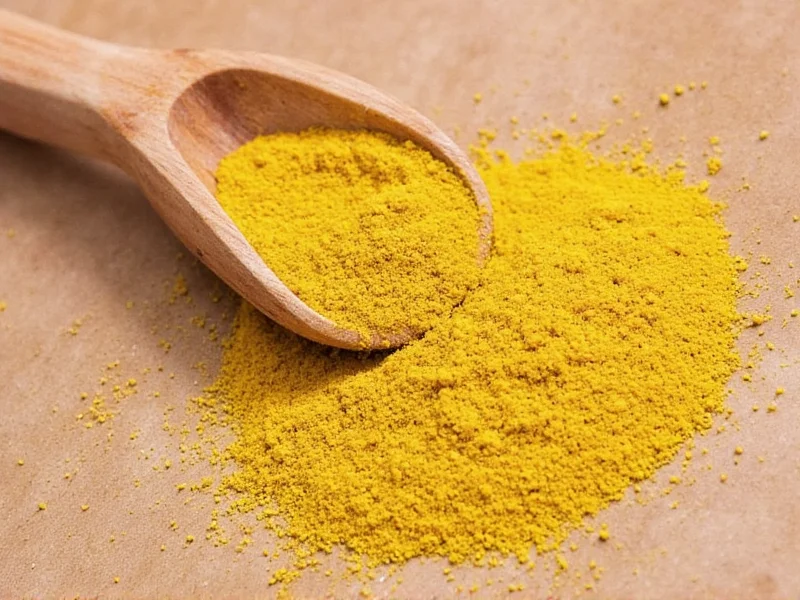When you're mid-recipe and realize you're out of mustard seeds, knowing how to properly substitute ground mustard becomes crucial. This common kitchen dilemma requires understanding both ingredients' properties to maintain your dish's intended flavor profile and texture.
Understanding the Fundamental Differences
Mustard seeds and ground mustard aren't simply different forms of the same ingredient—they behave differently in cooking due to chemical and physical properties.
Whole mustard seeds contain myrosinase, an enzyme that activates when crushed or chewed, creating that characteristic pungent heat. Ground mustard has already undergone this process, with the essential oils partially evaporated during grinding. This explains why ground mustard delivers immediate but less complex heat compared to seeds that develop flavor during cooking.
Substitution Ratios and Timing Considerations
Getting the conversion right is essential for recipe success. The standard mustard seed to ground mustard conversion follows this ratio:
| Mustard Form | Equivalent Measurement | Best Used In |
|---|---|---|
| Whole mustard seeds | 1 tablespoon | Tempering, pickling, breads |
| Ground mustard | 1 teaspoon | Dressings, marinades, dry rubs |
| Mustard powder | 1 teaspoon | Sauces, cheese spreads, spice blends |
Timing matters significantly when making this substitution. Whole seeds added early in cooking provide gradual flavor development as they pop and release oils, while ground mustard incorporated later prevents bitterness from prolonged heat exposure.
Flavor Impact Analysis
The substitution affects more than just heat level—it changes the entire flavor trajectory of your dish:
- Whole mustard seeds deliver complex, nutty notes with delayed heat that builds gradually
- Ground mustard provides immediate but flatter heat with less aromatic complexity
- Mustard powder offers concentrated flavor but can turn bitter if overheated
When substituting ground mustard for seeds in Indian cuisine, you'll miss the characteristic "tadka" (tempering) effect where seeds crackle in oil, releasing essential oils that form the flavor foundation. For pickling recipes, this substitution requires adjusting vinegar quantities since ground mustard absorbs more liquid.
Practical Substitution Guidelines by Cuisine
Not all substitutions work equally well across different culinary applications. Consider these cuisine-specific recommendations:
Indian and Middle Eastern Dishes
For curries and dals requiring tempered mustard seeds, substitute ground mustard at half the standard ratio (1/2 teaspoon ground = 1 tablespoon seeds) and add it after other spices have bloomed in oil. The texture difference is noticeable but acceptable in liquid-based dishes.
Pickling and Preserving
Mustard seeds contribute both flavor and visual appeal to pickles. When substituting ground mustard:
- Reduce liquid by 1-2 teaspoons per tablespoon of seeds replaced
- Add ground mustard at the end of cooking to preserve flavor
- Consider adding 1/4 teaspoon turmeric for visual similarity
Baking Applications
In breads and pretzels where mustard seeds provide texture contrast, ground mustard works well at standard conversion ratios but won't deliver the same visual appeal or textural interest.
Common Substitution Mistakes to Avoid
Many home cooks make these critical errors when substituting mustard forms:
- Using equal volumes - Ground mustard is significantly more concentrated
- Adding ground mustard too early - Causes bitterness from prolonged heat exposure
- Ignoring moisture differences - Ground mustard absorbs more liquid than seeds
- Not adjusting for flavor development - Seeds build flavor gradually while ground mustard delivers immediate heat
For the most successful substitution when replacing mustard seeds with ground mustard, create a paste by mixing the ground mustard with a small amount of cold liquid first. This mimics the gradual flavor release of whole seeds while preventing clumping.
When Substitution Isn't Recommended
While ground mustard can generally replace mustard seeds, certain applications demand the authentic ingredient:
- Traditional Bengali shorshe ilish (mustard fish curry) where seed texture is integral
- Authentic sauerkraut preparation requiring visible seeds
- Recipes specifically designed around the popping action of tempered seeds
- Dishes where visual presentation of whole seeds matters
In these cases, consider alternative substitutions like fennel seeds (for texture) combined with a touch of horseradish (for heat), rather than using ground mustard.
Storage and Freshness Considerations
Remember that ground mustard loses potency faster than whole seeds. Freshly ground mustard from whole seeds provides the most vibrant flavor. If using pre-ground mustard as a substitute, check its freshness—mustard powder typically maintains potency for 6-12 months when stored properly in an airtight container away from light.
For optimal substitution results, use high-quality stone-ground mustard powder rather than standard yellow mustard powder, as it retains more essential oils and provides flavor closer to whole seeds.











 浙公网安备
33010002000092号
浙公网安备
33010002000092号 浙B2-20120091-4
浙B2-20120091-4